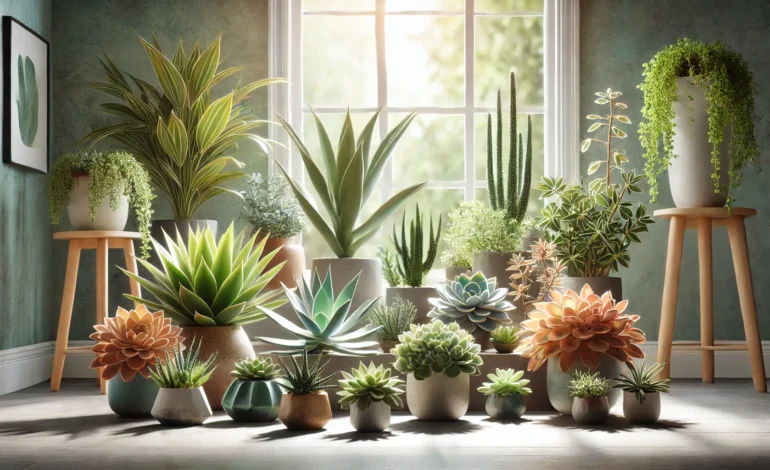Healing Succulent Plants NYT: Discover Nature’s Remedy for Wellness

In the hustle and bustle of modern life, many of us search for ways to improve our well-being and reconnect with nature. One trend gaining popularity is the use of healing succulent plants nyt to enhance our physical and mental health. These hardy and beautiful plants are more than just decorative elements—they’re nature’s remedy for wellness, offering numerous benefits for the mind, body, and environment.
In this blog, we will delve into why succulent plants are hailed as a natural way to promote healing, how they became a highlight in wellness practices featured by the New York Times (NYT), and how you can incorporate them into your daily life for maximum benefits.
What Are Succulent Plants?
Succulent plants are a diverse group of plants that store water in their leaves, stems, or roots. They thrive in arid conditions, which makes them incredibly resilient and easy to care for. Succulents include popular varieties such as aloe vera, jade plants, echeveria, and snake plants.
Must Read: Quordle Hints Today: Your Ultimate Guide to Solving the Puzzle
What sets succulents apart from other houseplants is their ability to survive with minimal attention while offering therapeutic benefits. They have been recognized by the wellness community—and even featured in NYT articles—as an excellent addition to holistic health practices.
The Wellness Benefits of Succulent Plants
1. Improved Air Quality
One of the most well-documented benefits of succulent plants is their ability to purify the air. Succulents absorb carbon dioxide and release oxygen, helping to improve indoor air quality. Some species, such as aloe vera and snake plants, also remove toxins like formaldehyde and benzene, which are often found in cleaning products or paints.
Having clean, oxygen-rich air is crucial for overall well-being. Breathing cleaner air can improve focus, reduce stress, and promote better sleep—essential components of a healthy lifestyle.
2. Natural Stress Relievers
Succulents are proven stress-busters. Studies have shown that interacting with plants, even for a few minutes a day, can lower cortisol levels and reduce anxiety. The process of watering and tending to these plants creates a calming ritual that helps you stay grounded and present.
The vibrant green hues of succulents have a psychological impact as well. Green is associated with tranquility and growth, making these plants a visual reminder of positivity and renewal.
3. Healing Properties of Aloe Vera
Among succulents, aloe vera stands out as a natural healer. Its gel contains anti-inflammatory, antibacterial, and antioxidant properties, making it a go-to remedy for skin conditions like burns, cuts, and acne.
Real Also: The Most Popular Games on Snokido: Action, Puzzle, Adventure, and More
Many skincare products feature aloe vera as a key ingredient, but having an aloe vera plant at home means you have access to fresh, unprocessed gel whenever needed. The NYT has often highlighted the growing trend of using natural remedies like aloe vera for personal care, emphasizing its effectiveness and simplicity.
4. Boosting Productivity
Succulent plants can improve focus and productivity, especially in work environments. According to studies cited by NYT, adding plants to your workspace can enhance memory retention and concentration by up to 20%.
Succulents are perfect for desks and offices because they don’t require frequent watering, making them low-maintenance companions for busy professionals. Their aesthetic appeal adds a touch of nature to otherwise sterile spaces, creating an atmosphere that fosters creativity and calmness.
5. Emotional Healing
Caring for plants has a therapeutic effect. It provides a sense of purpose and responsibility, which can be particularly beneficial for individuals struggling with depression or loneliness. Succulents are forgiving plants, so even if you’re a beginner, their resilience will encourage you to keep nurturing them.
Many mental health experts, including those featured in NYT, recommend gardening or plant care as a form of mindfulness practice. Watching a plant grow and thrive under your care can be a deeply rewarding experience.
Succulent Plants in Wellness Practices
1. Incorporating Succulents into Yoga and Meditation
Wellness enthusiasts are integrating succulents into their yoga and meditation spaces. The serene and minimalist look of these plants complements the calming atmosphere required for mindfulness practices.
Aloe vera and jade plants, in particular, are believed to emit positive energy that enhances the meditative experience. Arranging succulents around your meditation cushion or yoga mat creates a tranquil environment that encourages inner peace.
2. DIY Succulent Remedies
Many succulent plants can be used to create natural remedies. For example:
- Aloe Vera Gel: Apply it directly to soothe burns, cuts, or dry skin.
- Cactus Water: Rich in antioxidants and electrolytes, cactus water (derived from certain succulents) is a hydrating drink popular among wellness enthusiasts.
- Succulent Tea: Certain succulents, like kalanchoe, are used in traditional herbal teas for their medicinal properties.
3. Succulent-Themed Terrariums for Relaxation
Building a succulent terrarium is a creative and therapeutic activity. This practice, often highlighted in lifestyle sections of NYT, allows you to design a miniature ecosystem that brings nature indoors.
Terrariums make for beautiful decorative pieces, and the process of assembling one encourages relaxation and mindfulness.
Tips for Caring for Succulent Plants
One of the reasons succulents are so popular is their low-maintenance nature. Here are some essential care tips:
- Light: Place succulents in bright, indirect sunlight. They thrive on windowsills or near well-lit areas.
- Watering: Allow the soil to dry completely before watering. Overwatering is one of the most common mistakes.
- Soil: Use well-draining soil to prevent root rot.
- Temperature: Keep them in a warm environment, as most succulents are sensitive to frost.
By following these simple steps, you can ensure your succulents stay healthy and vibrant, continuing to provide their healing benefits.
The NYT Spotlight on Succulent Plants
The New York Times has frequently covered the growing trend of using plants for wellness, with succulents taking center stage in many articles. The coverage highlights how succulents are not only aesthetic additions to homes but also powerful tools for promoting health and mindfulness.
From their role in interior design to their therapeutic applications, succulents are celebrated as versatile plants that bridge the gap between nature and modern living. Their ability to thrive in small spaces makes them ideal for urban dwellers who want to incorporate greenery into their lives.
Conclusion: Embrace the Healing Power of Succulent Plants
Healing Succulent Plants NYT are more than just trendy decor items—they are a gateway to improved well-being and a closer connection to nature. With their ability to purify air, reduce stress, and promote healing, these resilient plants are a natural remedy for the challenges of modern life.
Whether you’re a seasoned plant lover or a beginner looking to start small, succulents offer an accessible and rewarding way to enhance your physical and mental health. Take inspiration from the NYT features on wellness and let these beautiful plants transform your home and lifestyle.
By embracing succulents, you’re not just adding greenery to your space—you’re investing in a healthier, happier you. So, why wait? Discover the healing magic of succulents today!









